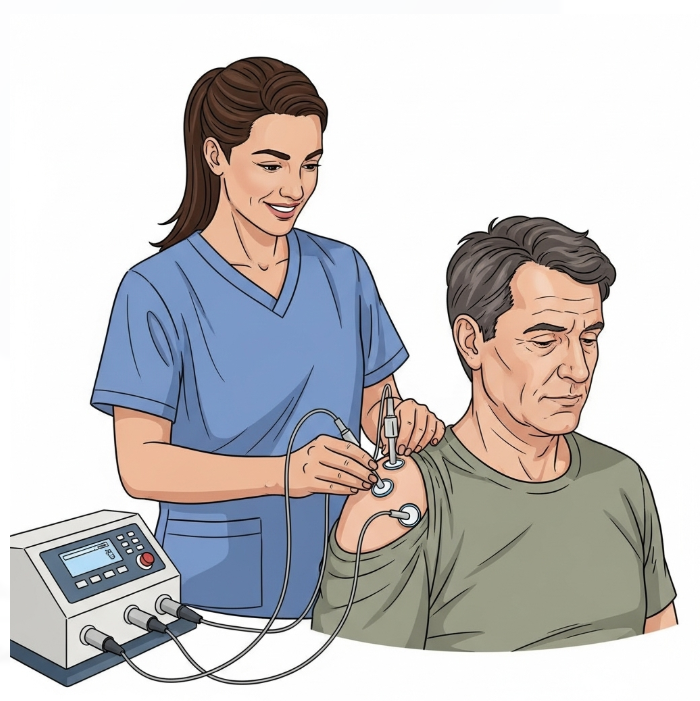As a teacher, the classroom is your domain, a place where you connect with students and ignite a passion for
learning. However, the profession's physical demands, including prolonged arm elevation, repetitive reaching,
and carrying heavy objects, can take a toll. It's not uncommon for teachers to experience shoulder pain, and
rotator cuff injuries are a frequent concern. In this blog we'll explore how a teacher got back to the classroom,
stronger than before, with the help of Interferential Therapy.
A Teacher's Shoulder Pain: Physical Demands & Rotator Cuff Strain
The demands of teaching often lead to a rotator cuff injury. The repetitive overhead motions inherent in teaching,
such as writing on the board and demonstrating concepts, put a significant strain on the shoulder. Over time,
this can lead to a rotator cuff injury, a condition where the tendons in the shoulder become inflamed or torn. This
overuse and repetitive motions can lead to rotator cuff tears. The pain was persistent, making it difficult to perform
even simple tasks like raising arm or writing on the board. It wasn't just physical discomfort; it was affecting
the ability to effectively teach and connect with my students.
IFT: A Physiotherapy Solution for Teacher's Rotator Cuff Pain
Physiotherapist recommended Interferential Therapy (IFT), a non-invasive treatment that uses gentle electri-
cal currents to target pain and inflammation deep within the shoulder. During IFT, an interferential current is
produced on the skin of the affected area using an interferential device. This interferential current penetrates
into the skin and reaches the underlying living muscle tissue. The goal of IFT is to reduce pain, decrease inflammation,
and improve muscle function. It's essential to remember that the effectiveness of IFT can vary depending on
the severity of the injury and the individual's response to treatment. Proper diagnosis and treatment by a qualified healthcare
professional are crucial for optimal outcomes.
Physiotherapy Treatment Plan
Alongside IFT, treatment plan included gentle exercises to improve range of motion and heat therapy to
relax muscles and boost circulation. Physiotherapist tailored the plan to specific needs, ensuring that she felt
supported every step of the way. The IFT treatment involved placing electrodes around my right shoulder in a
clover leaf pattern, with a beat frequency of 100 Hz for 15 minutes. In addition to IFT, my physiotherapy sessions
included moist heat therapy for 20 minutes for 2-3 weeks. I also underwent Spencer’s technique and Codman's
exercise progression as part of my rehabilitation. The Spencer's technique was performed in which the patient’s
elbow was flexed and 90 degree abduction of the shoulder was done. The humerus was rotated both clockwise and
anticlockwise by using the elbow as a pivot. In the next step, the patient's elbow was flexed and the shoulder was
kept in an abducted position and the traction force was exerted on the shoulder joint while rotating the humerus
clockwise and anti-clockwise.
IFT's Positive Impact on a Teacher's Classroom Experience
With reduced pain and increased mobility, I could once again write comfortably on the board, demonstrate
complex concepts with ease, and actively participate in classroom activities. I felt like myself again, energized
and ready to inspire my students. Over the course of several weeks, I experienced significant improvements. The
pain gradually subsided, and my range of motion increased. The combination of IFT and other physiotherapy
techniques was truly making a difference.
Conclusion
My journey back to the classroom proves that with the right approach, you can overcome pain and reclaim
your passion. We believe in personalized care, powered by innovation, to help you achieve
lasting results. If you're experiencing shoulder pain, schedule a consultation today to explore how IFT and our
comprehensive treatment plans can help you get back to doing what you love. Transforming physiotherapy, one
patient at a time.
